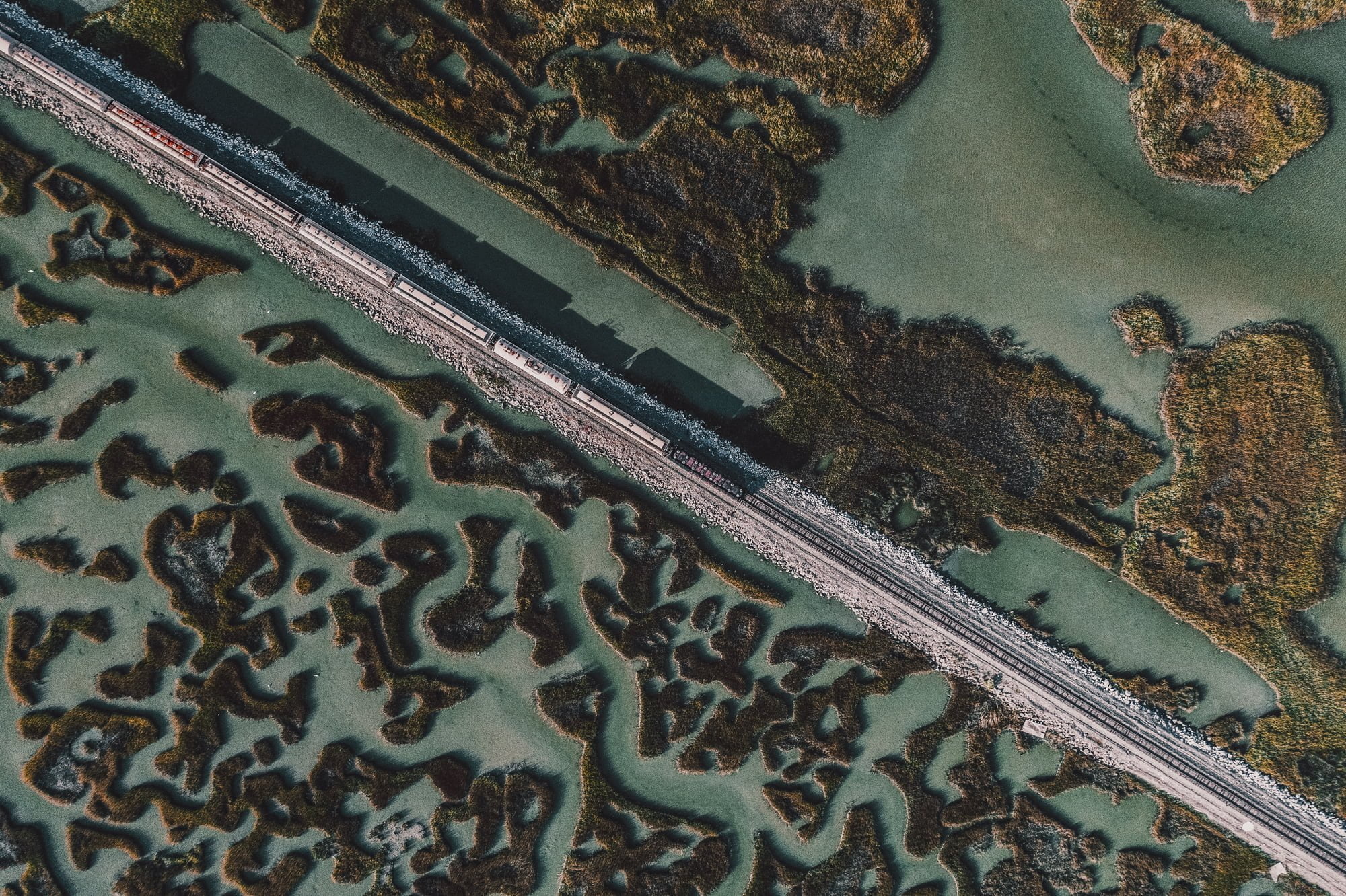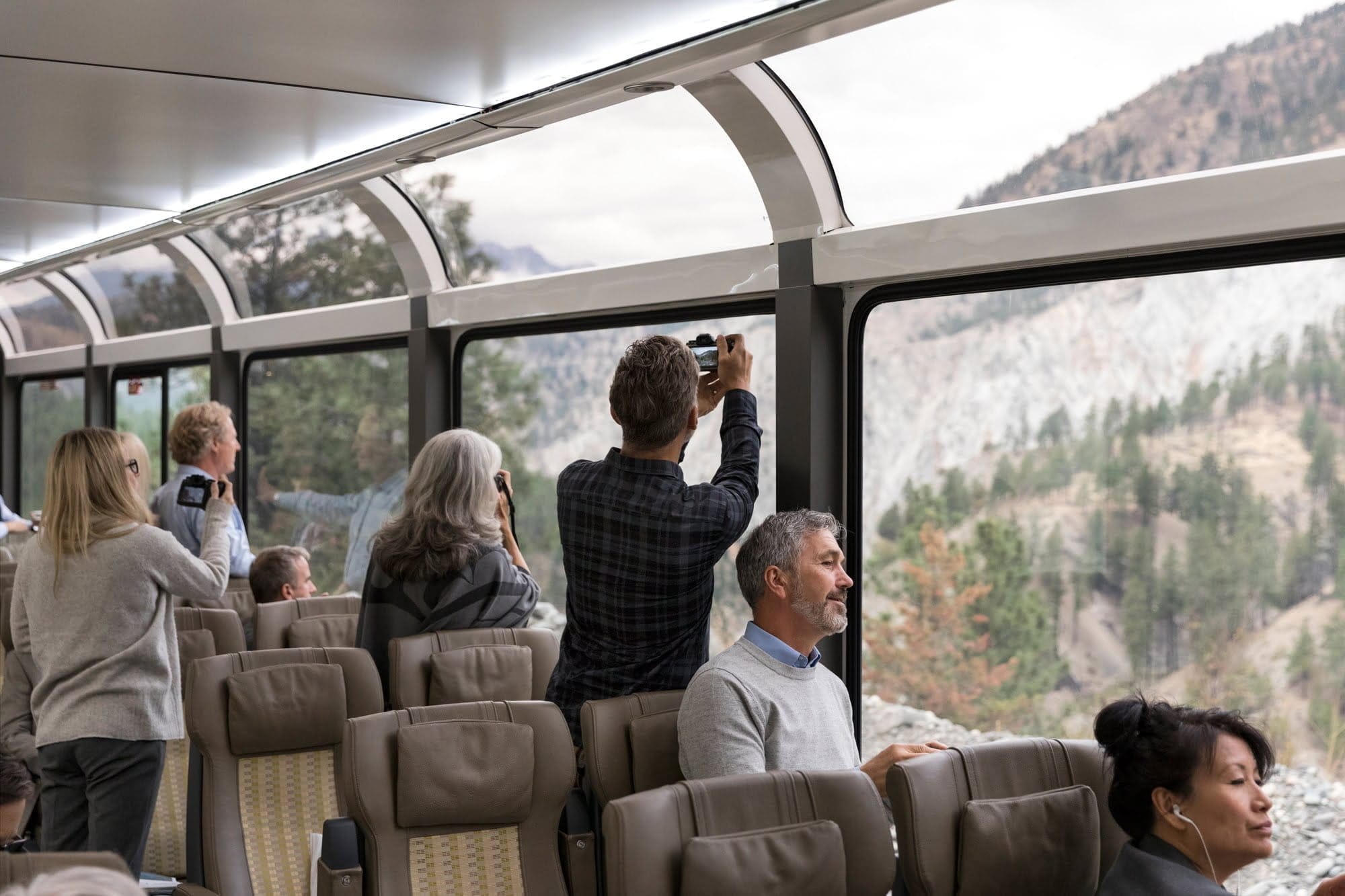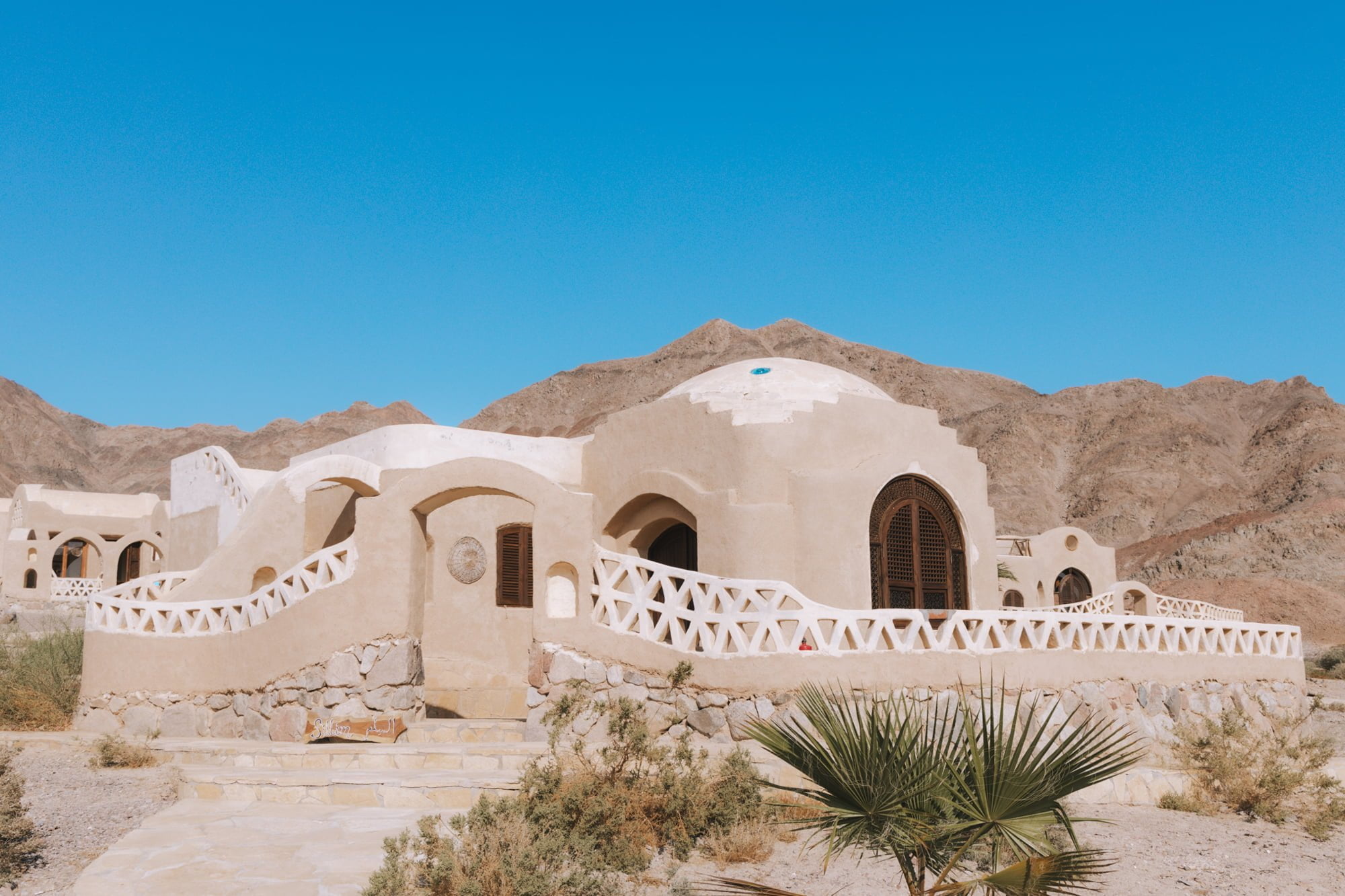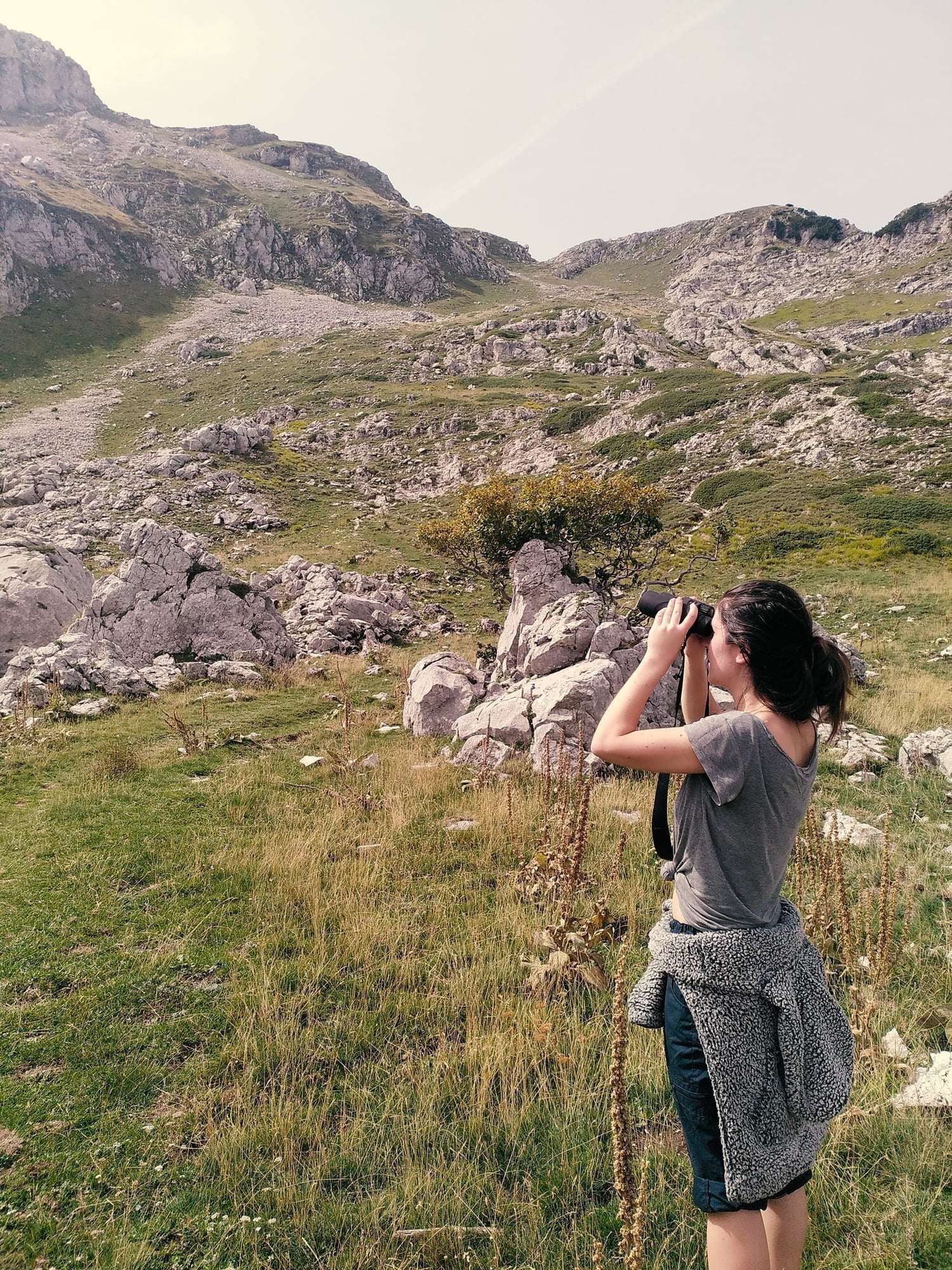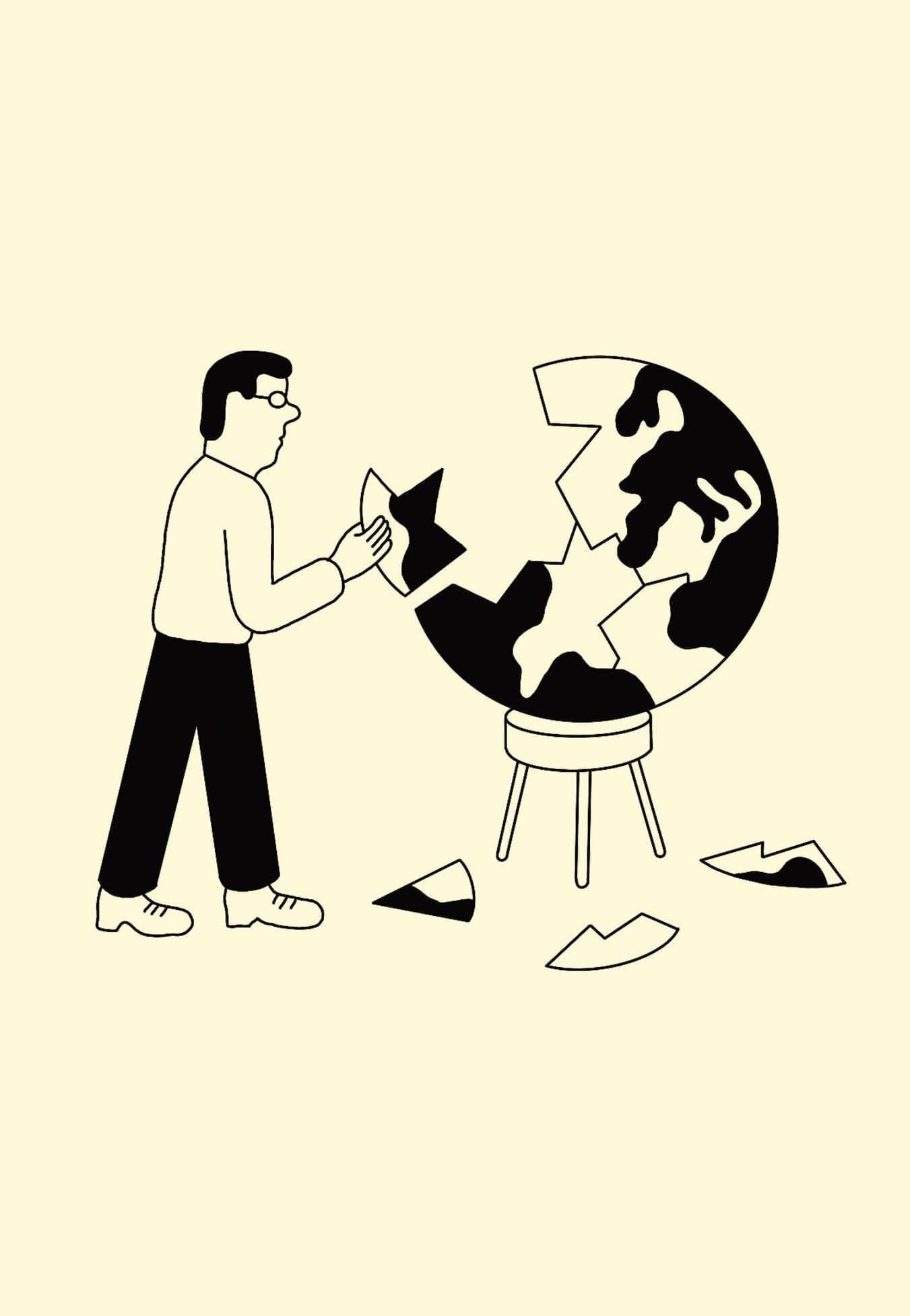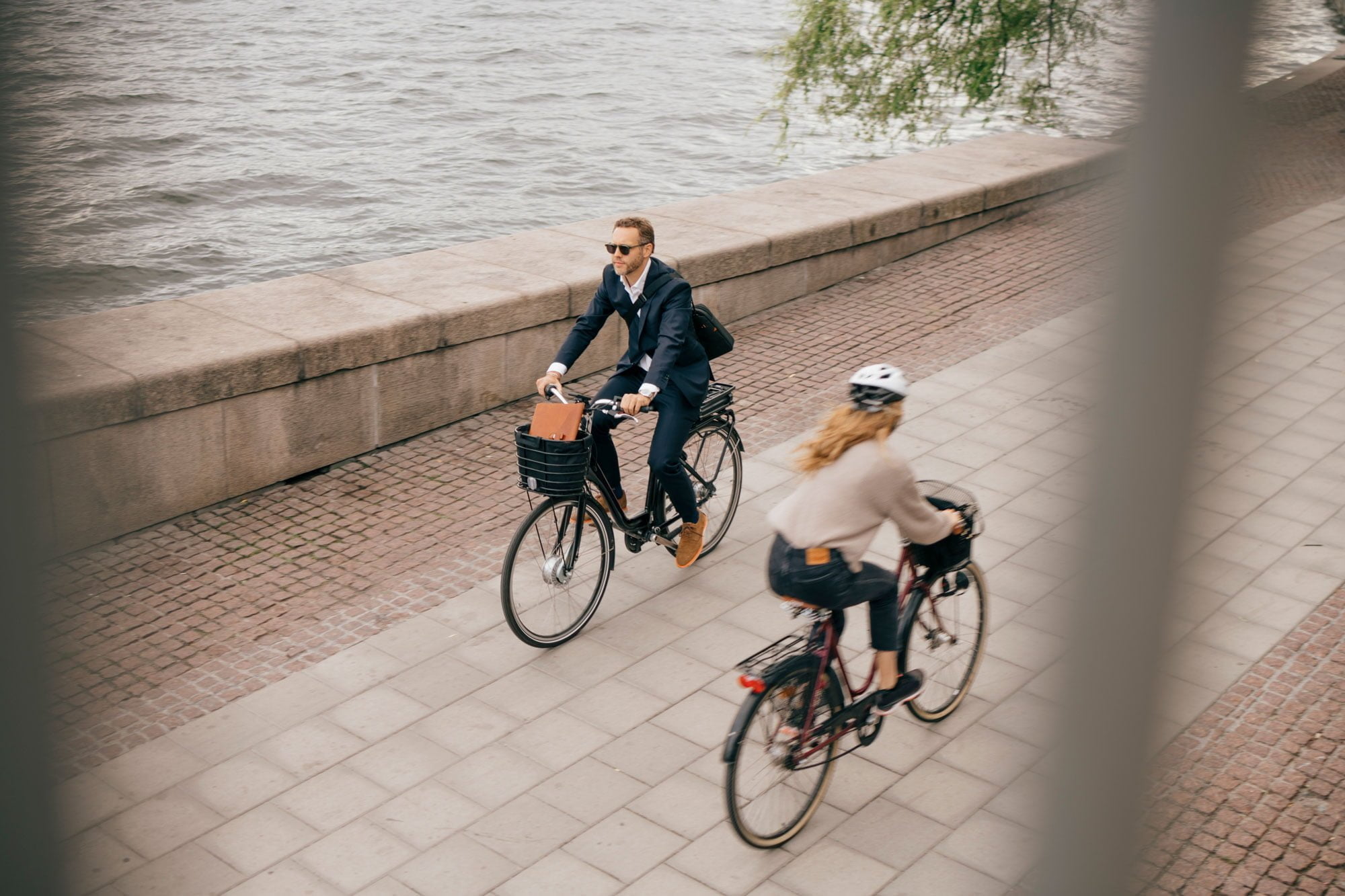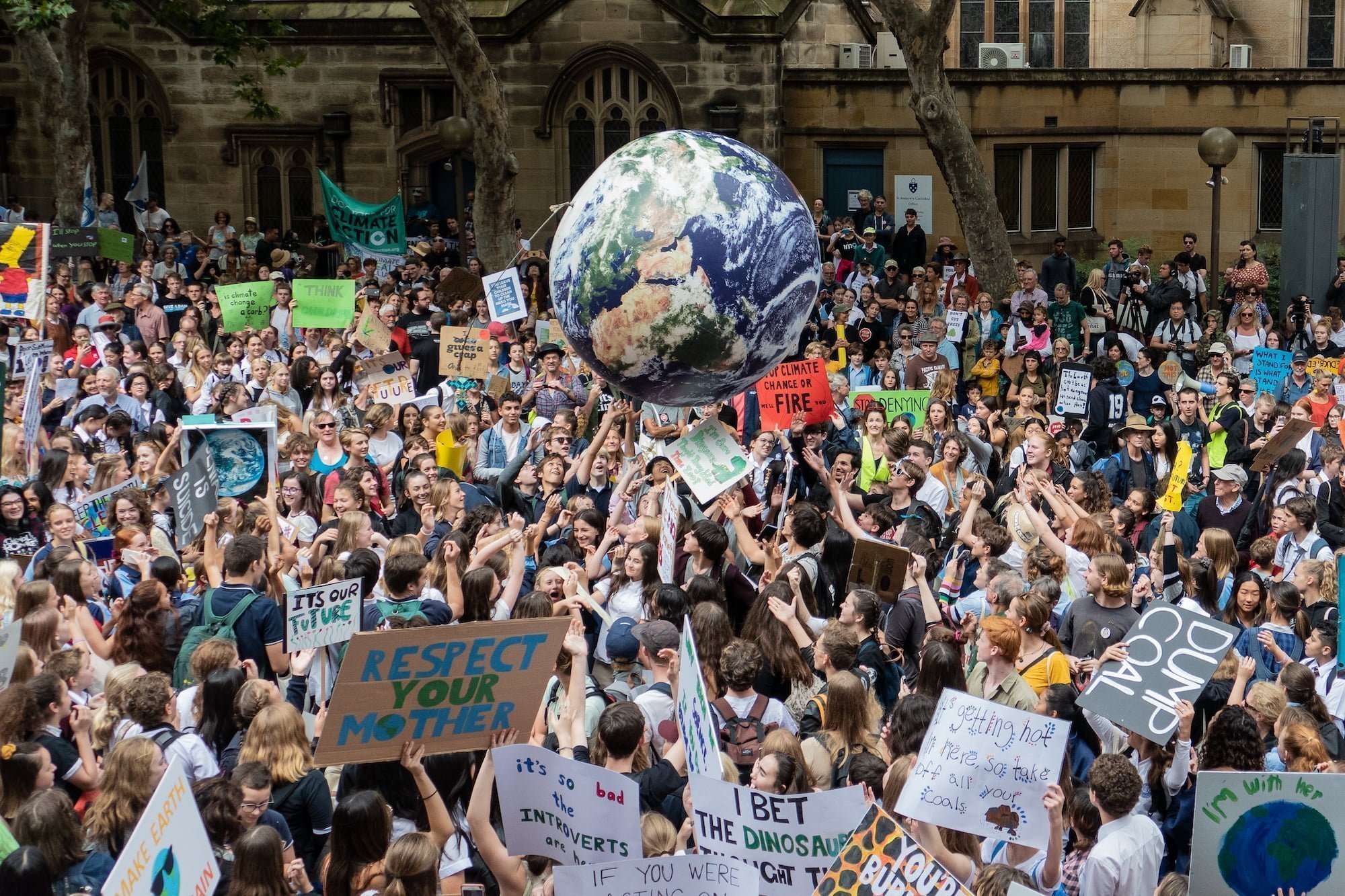When invited to speak at a travel conference in Morocco, sustainable travel expert Holly Tuppen faced a conundrum. Is it okay to fly across a continent to try and persuade people to live more sustainably? So began an overland adventure.
Wandering the banks of the Seine at golden hour, soaking up the gentle buzz of tourists and locals basking in the evening sun, it occurs to me that we could be tucking into a tagine on the roof of a Marrakesh riad by now. Yes, flying is unbelievably efficient, but six hours into my five-day overland adventure, I’m already grateful for going slow.
There are 14 of us heading overland from London to Marrakesh via Paris, Barcelona, Seville, and Tangier. Intrepid Travel organizes the trip and, like other tour operators, is working hard to reduce flights where possible. In the last year, the global tour operator has removed over 4,000 flights from trips. For this journey, even after adding up emissions from hotel stays and transfers, we each save approximately 340kg of carbon pollution by not flying to Morocco.
To put that in perspective, to reach a limit of 1.5 degrees of global warming (the limit scientists hope for to prevent the worst impacts of climate change), we need to stick to a carbon budget of 1500kg per person per year. A one-way flight from London to Marrakesh is approximately 500kg of carbon, and the average annual emissions of someone living in Ethiopia is 560kg. So, jumping on trains rather than planes takes a big chunk out of your overall emissions.
“There’s unexpected magic at every turn”
But it’s not just the carbon saving that makes me giddy about overland travel. Something about popping into cities for a night in transit makes you see them anew. With not quite enough time to do any serious sightseeing but just enough to revel in the atmosphere, there’s unexpected magic and interest at every turn, like perusing an art gallery with no agenda. And because you’re getting from A to B, it’s all a bonus, quadrupling a sense of privilege and appreciation for this storied continent.

After an evening wandering in Paris, we hop on the TGV to Barcelona the following day. Despite hitting 300km/hour (186mph) speeds, the journey takes over six hours. France, it turns out, is quite big. Train travel is an excellent opportunity for many people to get stuff done – read, write, and tackle emails. However, if you get travel sick like me, staring out the window is mandatory.
By Valence, mountains loom in the distance, and at Sète, we get our first glimpse of The Med. The train weaves along the coast from there, cutting across spits of land with wetlands, wading flamingos, and flocks of warblers to the right, and beach bars, fishing boats, and sweeping sands to the left. We arrive in Barcelona late afternoon, just two days after leaving London.
Meeting at 7 pm feels too early for tapas, but our guide has much in store. Avoiding Barcelona’s more touristed spots, we dive into family-run restaurants and vermouth drinking holes in the Gothic quarter. After rounds of Catalan specials like pa amb tomàquet and patas bravas, we finish the night in Bodega del Vermut, sipping on the tipple of the moment, accompanied by the largest anchovies we have ever seen. By the time we leave at 11 pm, the city is raring to go — there’s live opera outside Barcelona’s cathedral, and kids are still playing in squares.
From Barcelona, the best way to get to Morocco on public transport is to take a high-speed train to Madrid and a slower train to Algeciras, meandering through the increasingly Moorish architecture and dry landscapes of southern Spain. From Algeciras, there’s a bus to Tarifa, where the ferry heads over to Tangier. Green Traveller and Rail Europe have some helpful itinerary tips. However, on this Intrepid trip, we go via Seville and jump on a minibus for the final leg from there to Tarifa.
It’s a six-hour train from Barcelona to Seville, but no one’s complaining. The group soon agrees that Spanish trains are the most comfortable yet. There is good Wi-Fi, a buzzy buffet carriage, and more space to spread out. The landscape changes abruptly as we glide through the Desierto de los Monegros, where greens become beige peppered with occasional vineyards. Although unsurprising, given its name, 2023 has been a particularly arid year. After picking up a local newspaper, we learn that flash floods recently washed away a family of four in their car nearby. Looking at the barren landscape, it’s not surprising. On the back end of a summer of extreme weather in Europe, from floods in Sicily to fires in Greece, it’s hard to escape climate-related trauma.
Home to Carmen, Don Juan, Figaro, flamenco and oranges, Seville is about as vibrant as Spanish cities get. It feels a long way from Paris between disembarking the train into 35-degree heat and peering over my hotel balcony to a scene of cats, hanging washing, white-washed houses, and cobbled streets. Situated in the heart of Andalusia, Seville is the ideal place to soak up the blending of Islamic and Christian influences as we head towards Morocco. I spend the afternoon admiring the intricate details of Moorish, Mudejar, and Gothic creativity at the Alcázar and Seville Cathedral. The drama continues into the evening at the Museo del Baile Flamenco, a wonderful tribute to the dance in an 18th-century theater founded by world-renowned flamenco dancer Cristina Hoyos. After learning about the heritage of flamenco in the museum, we huddle up in the tiny theater for an intimate and emotional performance.
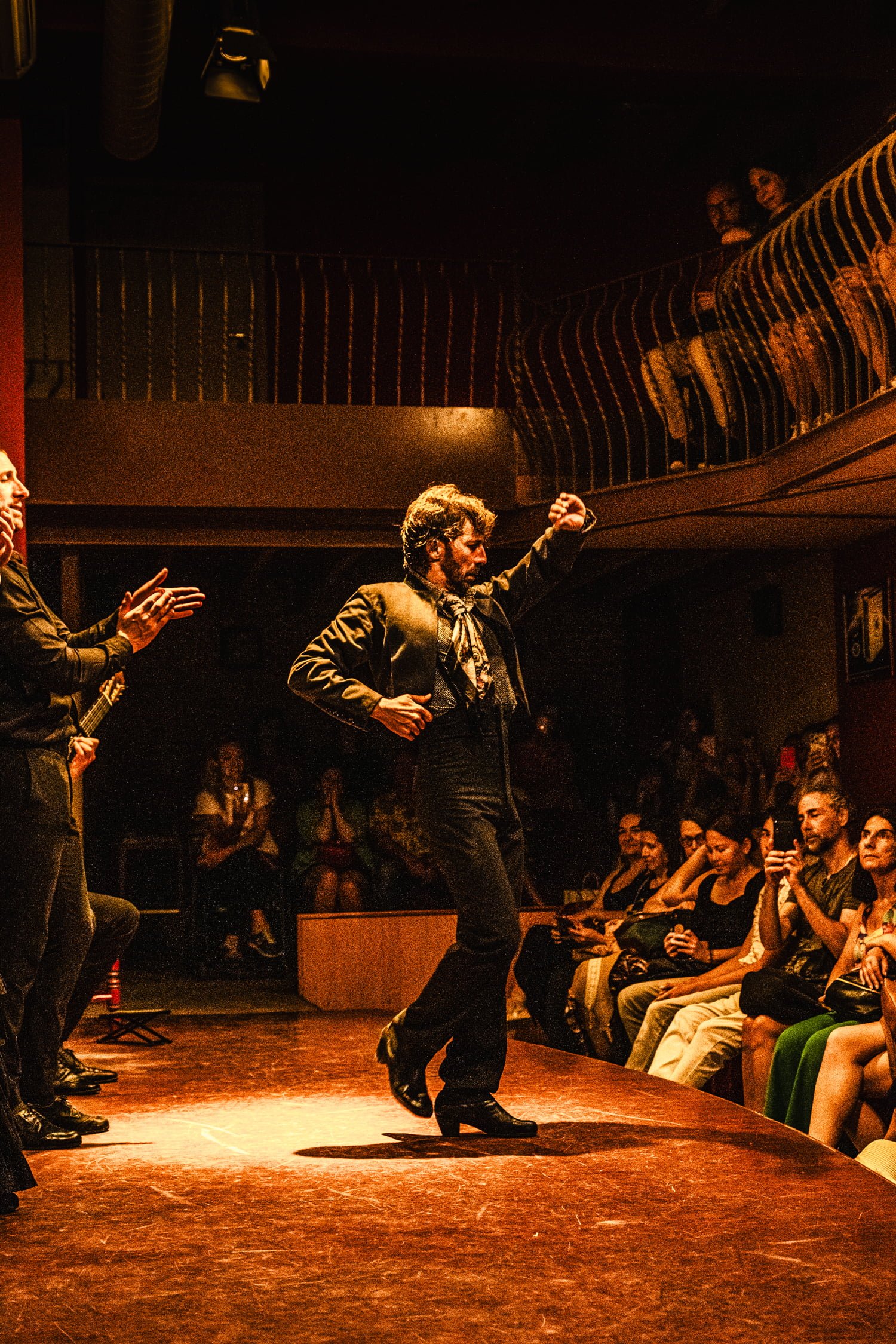
Taking in a flamenco show at Seville’s Casa de la Memoria.
It’s hard to leave Seville, but bright and early the next morning our journey continues south. Perched on the southernmost tip of Spain, a mere eight miles from Africa, Tarifa feels like a frontier town. Perhaps because it’s here that the Moors launched their Iberian invasion in the eighth century, or due to the dramatic scenery — there’s a vast windy beach, 30-meter high dunes, and an impressive fort. In the morning sun, dust and sea salt permeate every surface. Adding to the drama, local myths and legends revolve around drug raids, smuggling expeditions, and bandits hiding in the surrounding mountains. Making a note to linger for longer another time, we head straight to the port to jump on the hour-long ferry to Tangier.
A thick sea fret sits on the Gibraltar Strait as we leave Europe for Africa, crossing at the point where the Atlantic meets the Mediterranean. It’s a dream crossing for this confessed geography and ferry nerd. While others relax in the lounge, I stare into the warm wind for an hour, looking out for dolphins, orcas, and fin whales — the strait’s narrow channel and deep waters make this an excellent spot for cetaceans. Alas, it’s hard to spot anything in the fog, but a sailing boat glides by, and before long, Tangier’s minarets come into view. It’s a timeless moment, and I daydream about the many boats that have made this same crossing over centuries.
Tangier is as hot and dusty as Tarifa but noisier with the friendly backdrop of toots, heckles, and the call to prayer. Leaving our bags in the minibus, we head to the medina, straight into the action just a 10-minute walk from the ferry terminal. Mirroring the Moorish influence in southern Spain, Tangier is strikingly European, having been occupied by the Portuguese and British at different times. In the 19th and 20th centuries, Ville Nouvelle was home to creative souls like Delacroix, Matisse, and Francis Bacon.
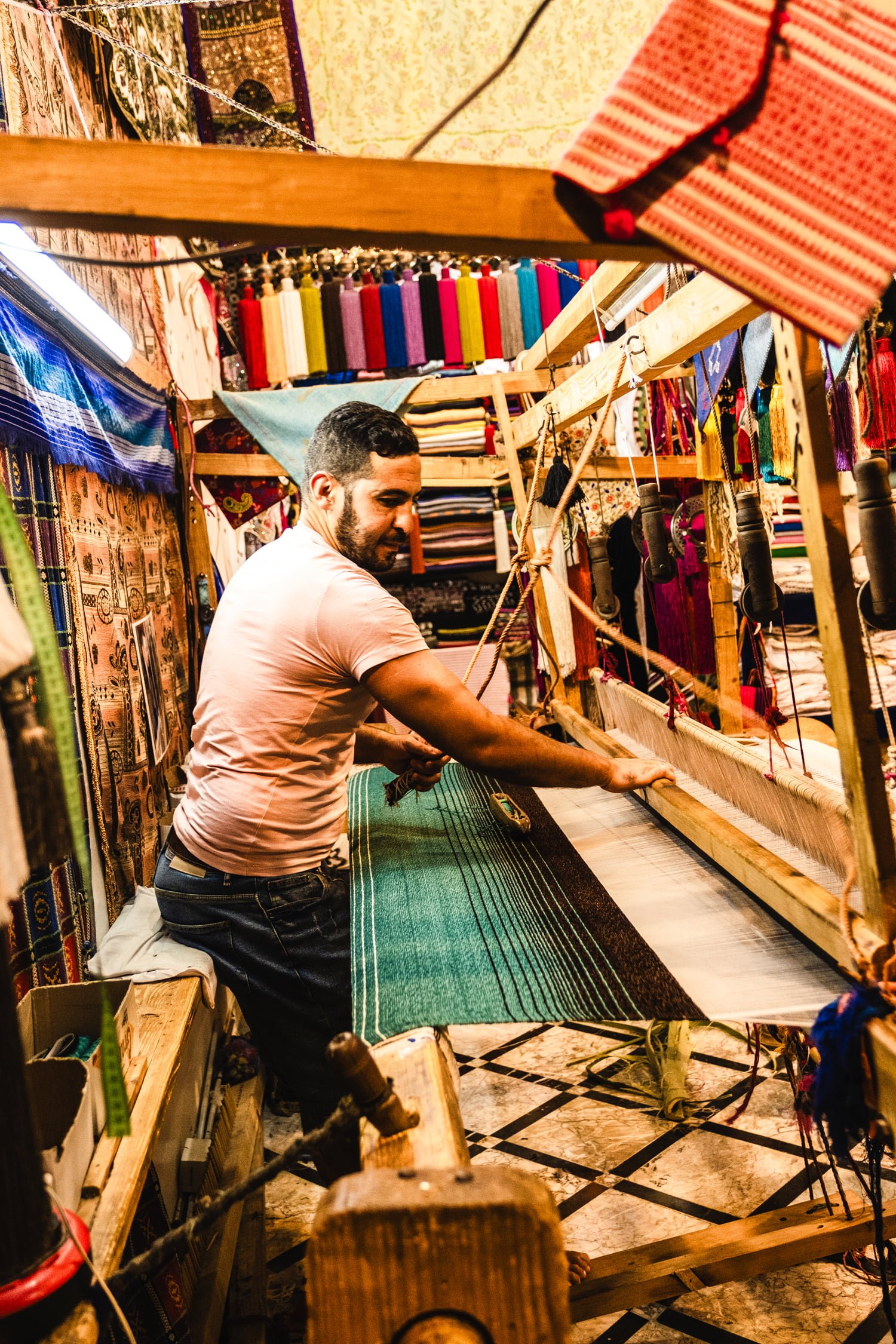
Traditional weaving in the medina of Fes, Morocco.
After fading in popularity after the 1950s, Tangier is back on the map as a creative hub. With longer to linger, I would have explored the Kasbah Museum, a contemporary gallery renovated in 2021, and Villa Harris Tangier Museum, a 19th-century mansion housing European and Moroccan modern art. But with one final journey to complete, after exploring the medina and looking back to Spain from the Bab Al Bahr (Gate of the Sea) viewpoint, we retreat to Le Mirage Hotel for a sunset swim.
“Overland travel is compulsive. There’s always just one more stop”
From Tangier, there are several options to get to Marrakesh. By train, there’s a high-speed line to Casa Voyageurs (also going to Rabat and Casablanca), and from there, a slower line takes you to Marrakesh. For the more adventurous, a sleeper service leaves Tangier at 23.25 and arrives in Marrakesh at 09.01. Train travel oracle The Man in Seat 61 has lots of helpful information, including where to book. Due to time limits, we take a minibus across the mid and anti-Atlas to Fez and, from there, hop on an Al Atlas train to Marrakesh. The six-hour journey breezes by with huge, squidgy seats and constantly shifting desert, mountain, and river valley views that are easier to soak up thanks to the slower speed.

Arriving in Marrakesh is a mix of relief at the prospect of staying in one place for a few days and sadness at reaching the end of the line. Overland travel is compulsive – there’s always just one more stop. For most of the group, the motivation for making the trip was not to cut carbon emissions but because jumping on trains is a novel way to see Europe. “We’re making history!” one of the groups exclaimed as the train rolled into Marrakesh. Understanding the serious carbon saving added a whole other layer to the trip. And that’s the beauty of slow travel. Jumping on a train when possible is not only helping to solve our climate crisis – it leads to a much better adventure.
The writer was hosted by Intrepid Travel in partnership with Pure. The trip can be booked via Intrepid in two sections: Paris to Madrid and Madrid to Marrakesh.
Lifestyle
Become a member
We’re able to tell stories like this because of people like you. Join others from around the world in supporting Imagine5’s mission towards a sustainable future. Join today and receive our latest magazine for free.
Join nowA NEW TAKE ON TRAVEL

